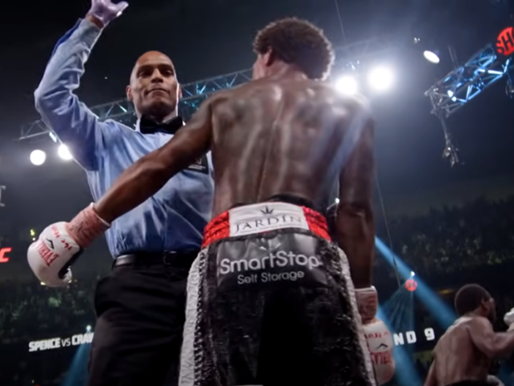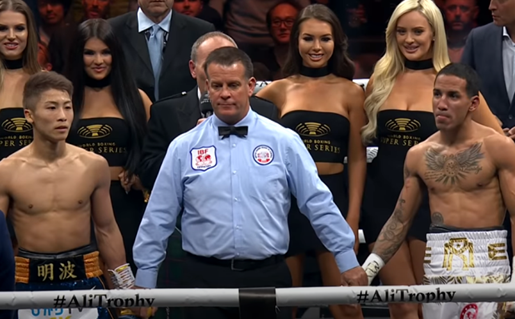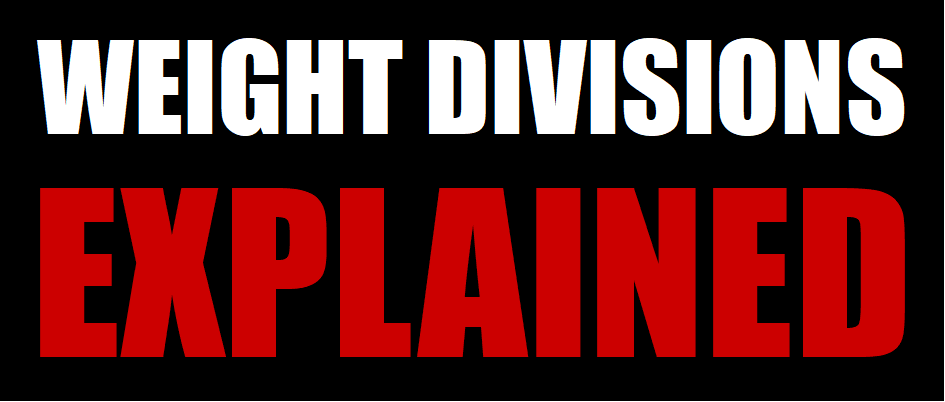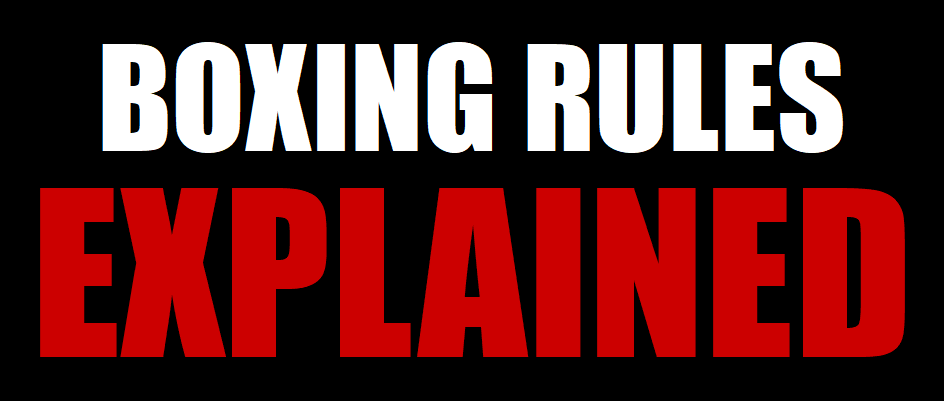Every kind of boxing result explained in our simplified guide, including Decisions (UD, SD, MD), Knockouts (KO, TKO, RTD), plus how scorecards work.

It’s true that boxing results can be more than a little confusing at times, mainly due to the various, seemingly subtle factors that can determine a fight’s outcome.
And so, to clear things up once and for all, here’s a quick breakdown.
What Do All the Different Boxing Results Mean?
Decisions
Unanimous Decision (UD)
A Unanimous Decision occurs when all 3 ringside judges score a fight in favor of the same fighter. Boxer A wins by UD 12, for example, as was the case with Floyd Mayweather Jr. vs. Marcos Maidana II.
Split Decision (SD)
A Split Decision takes place when the judges disagree on the fight’s winner. For example:
- Judge 1 – Boxer A
- Judge 2 – Boxer B
- Judge 3 – Boxer B
Boxer B would be the winner of the fight as he received the nod from the majority of the judges. In which case, Boxer B wins by SD 12, which also occurred in Canelo Alvarez vs. Erislandy Lara.
Majority Decision (MD)

A Majority Decision happens when two of the judges score a fight in favor of one boxer, while the other scores it evenly as a draw. For example:
- Judge 1 – Boxer A
- Judge 2 – Boxer A
- Judge 3 – Draw
Here Boxer A wins by MD 12, as was also the case with Danny Garcia vs. Lamont Peterson.
Points (PTS)
Not to be confused with a Unanimous, Split or Majority Decision, a Points decision is awarded from a single judge, that being the bout’s referee. In addition to refereeing the contest, he scores each round (often using the same criteria of a three-piece judging panel).
Usually Points judging is used in fights consisting of 8 rounds or less, particularly for up-and-coming boxers, such as those in their early pro careers. For example, young prospects in debut fights or those with less than 10 professional fights. It is also widely used in non-title bouts in the UK.
Boxing Scorecards
Here’s an example of how a fight could be scored by one of the 3 ringside judges.
Using the ‘1o-Point Must’ system, the winner of a round receives 10 points, and the loser 9. Additional points are awarded for knockdowns, with points docked for intentional fouls should they occur.
| Boxer A | Boxer B | |
| Round 1 | 10 | 9 |
| Round 2 | 10 | 9 |
| Round 3 | 9 | 10 |
| Round 4 | 9 | 10 |
| Round 5 | 10 | 8 |
| Round 6 | 10 | 9 |
| Round 7 | 9 | 10 |
| Round 8 | 9 | 10 |
| Round 9 | 8 | 10 |
| Round 10 | 9 | 10 |
| Round 11 | 10 | 9 |
| Round 12 | 9 | 10 |
| 112 | 114 |
The judge of the card below decided that Boxer A won rounds 1, 2, 5, 6 and 10, and also noted a knockdown in round 5. For Boxer B, rounds 3, 4, 7, 8, 9, 10 and 12 were awarded, with a knockdown scored in round 9.
The score totals following the final bell are 114-112, in favor of Boxer B. The other two judges are also in agreeance on their cards, meaning that the result of the contest is ‘Boxer B by Unanimous Decision (UD 12)’.
Knockouts
Knockout (KO)
A knockout victory occurs when a boxer is knocked down and cannot rise to his feet in an upright-standing position before the referee reaches a full 10 count. This may be due to disorientation from the punch received prior to the knockdown, or due to the boxer being ‘out cold’ due to a severe concussion.
For example, the result of a bout stopped in the third round would be KO 2, as was the case with Gennady Golovkin vs. Marco Antonio Rubio.
In the modern era, where fighter safety has improved, TKOs (see below) have become a more common official boxing result. Unlike the traditional KO, which simply requires a boxer to beat the count of ten, a TKO allows referees to use their own judgement and therefore make merciful stoppages.
Technical Knockout (TKO)

A technical knockout occurs when the referee stops a fight out of concern for a boxer’s safety. Unlike a KO, which only requires that a 10 count be beaten, TKOs rely solely on the referee’s discretion.
The referee will usually signal this decision by crossing his hands, high and clearly in the air. For example, Boxer A may lose a fight by way of TKO if he is:
- Knocked down, gets back to his feet before the count of 10, but appears to be seriously hurt, exhibiting shaky legs and glazed eyes, and an inability to respond to the referee’s instruction to ‘walk towards him’ (Carl Froch vs. George Groves II – TKO 8)
- On the ropes, appears to be hurt and or defenseless, while returning little to no punches at Boxer B who is unloading a barrage of punishment that could lead to serious injury (Shawn Porter vs. Paulie Malignaggi – TKO 4)
- Barely able to compete. Even though he appears somewhat mobile and able to punch, he has become heavily fatigued and or despondent due to an accumulation of punishment from Boxer B over the course of the fight. The referee therefore concludes Boxer A is unable to properly defend himself and compete due to the visible attrition. (Terence Crawford vs. Yuriorkis Gamboa – TKO 9)
- Taking serious punishment from Boxer B. The referee sees Boxer A’s corner throw the towel into the ring and promptly halts the bout (Andre Ward vs. Paul Smith – TKO 9)
Retired (RTD)
A Retired boxing result occurs due to a decision made between rounds, generally when either a boxer decides he does not wish to continue the bout, or his corner, in consideration of their boxer’s safety, makes that decision for him. See Julio Cesar Chavez Jr. vs. Andrzej Fonfara, which ended via RTD 9.
Draws
Draw (D)
A Draw in boxing takes place when all 3 ringside judges score the bout dead even. For example:
- Judge 1 – 114-114
- Judge 2 – 114-114
- Judge 3 – 114-114
This is very uncommon, however, as there is usually a slight discrepancy between scorecards. It is far more common for a Split or Majority Draw to be announced (see below). The result would be recorded as D 12, for example.
Split Draw (D)

A Split Draw is essentially a Draw and occurs when one judge scores the fight even and the other two disagree on the bout’s winner. For example:
- Judge 1 – Even
- Judge 2 – Boxer A
- Judge 3 – Boxer B
With neither Boxer A or B winning, the record would reflect an outcome of D 12, for example. This was also the verdict of Andy Lee vs. Peter Quillin.
Majority Draw (D)
A Majority Draw is essentially a Draw and is reached when two judges score the fight even, and the other for one boxer. For example:
- Judge 1 – Even
- Judge 2 – Even
- Judge 3 – Boxer A
With no winner emerging from the bout, the verdict would be declared D 12, for example. This was how the judges saw Darleys Perez vs. Anthony Crolla.
Technical Decisions
Technical Decision (TD)

A Technical Decision happens when an accidental foul causes the fight to be stopped. So long as a minimum of 4 rounds have been completed, the boxer who has received the most points will become the bout’s winner by way of TD.
For example, Boxer A wins a match at the close of the 8th round (TD 8), the same outcome of Evgeny Gradovich vs. Lee Selby).
In the event of the judges scoring the bout even, a Technical Draw (see below) is ruled – again, so long as 4 rounds have been completed. If 4 rounds have not yet been completed when the bout is stopped, a No Decision is ruled (see below also).
Technical Draw
A Technical Draw boxing result usually occurs when an accidental foul causes a bout to be stopped. The bout’s outcome is then determined by the judges’ scorecards up to this point – so long as at least 4 rounds have been completed.
For a Technical Draw to happen, there must be no clear winner reflected on the judges’ collective scorecards. For example, Boxer A wins the bout at the close of round 7 (TD 7) following identical scores of 67-66.
Other Boxing Results Explained
Disqualification (DQ)
A Disqualification takes place when a boxer commits a major foul, or several, that forces a referee to stop a bout immediately. For instance, a brazen intentional head butt or low blow.
A boxer may also be Disqualified for throwing rabbit punches, biting, illegal use of elbows, thumbing an opponent’s eyes, hitting during a ‘break’, or intentionally after he has been knocked down/after the bell has rung to end the round.
For example, a fight may end via Disqualification in the 3rd round (DQ 3). This was also the case with the infamous Mike Tyson vs. Evander Holyfield II.
No Decision (ND) / No Contest (NC)
A No Decision/No Contest occurs when an accidental foul or unusual event takes place before 4 rounds have been completed. For example, Boxer A accidentally head butts Boxer B in the 1st round, opening a severe cut, which causes the fight to end in the 3rd.
Moreover, a boxing result, such as a UD 12, can be changed post-fight to a ND/NC. For instance, the winner may have since tested positive for an illegal substance, commonly known as a performance enhancing drug (PED).
While very rare, overturned results can happen in boxing, as was the case with Devin Haney vs. Ryan Garcia. The official result of the fight was ‘Garcia UD 12’, but this was later overturned to a ‘NC’ several weeks later by the New York State Athletic Commission.
If you’d like to know more about scorecards, decisions or other boxing results, get in touch via our Contact page.
Alternatively, for more general boxing info, you can select a page from below or return to our extensive Boxing FAQ.





